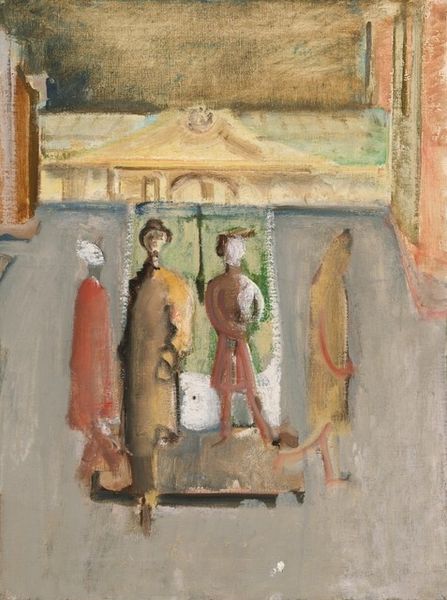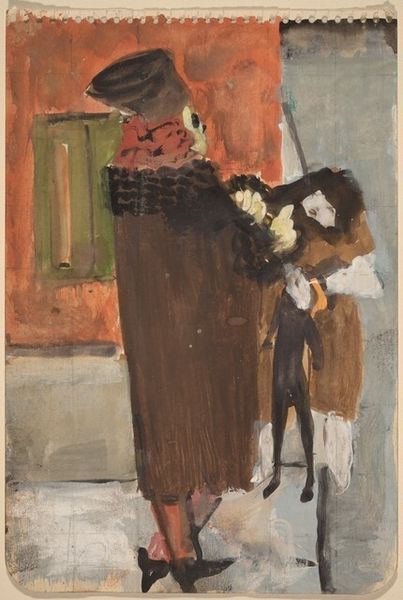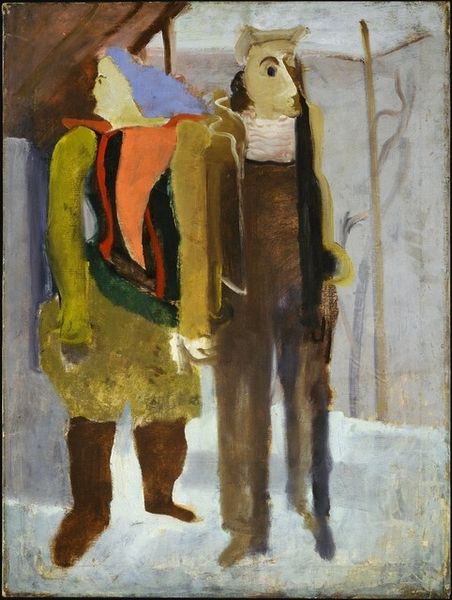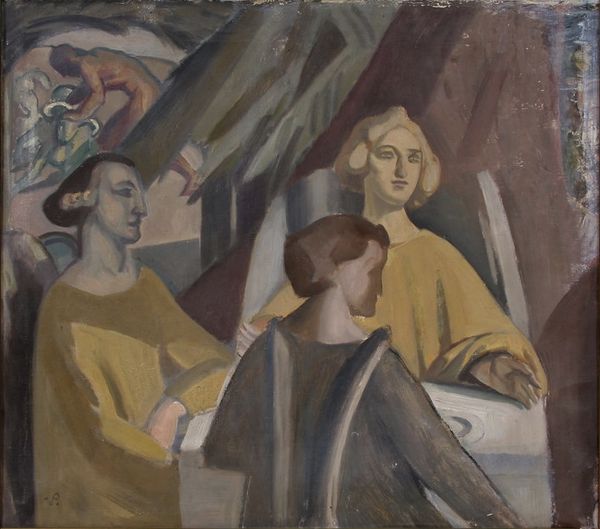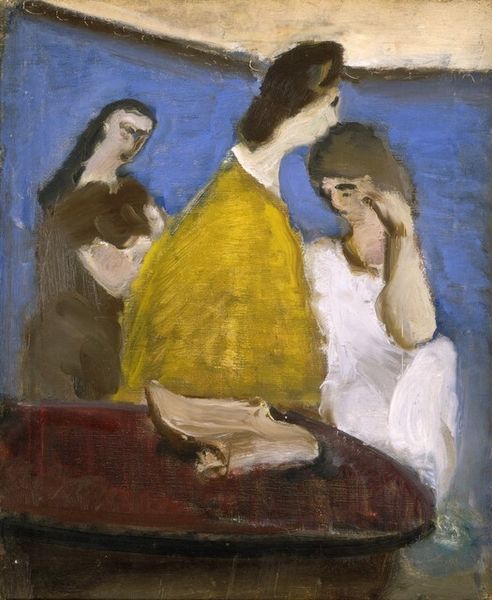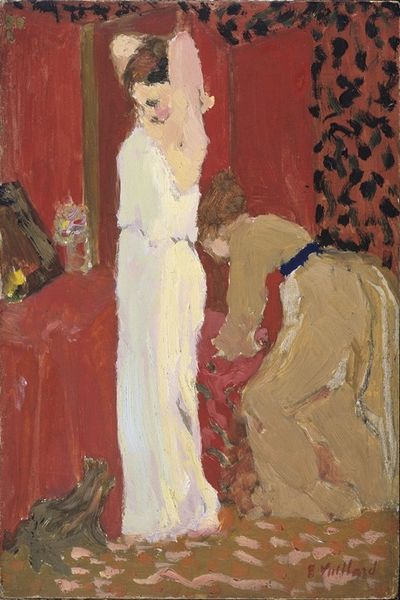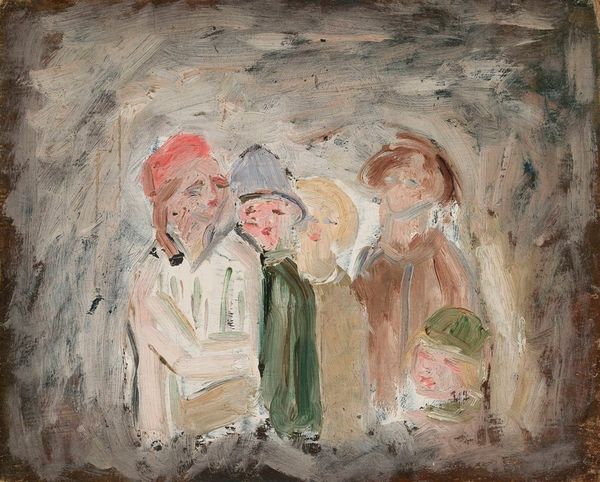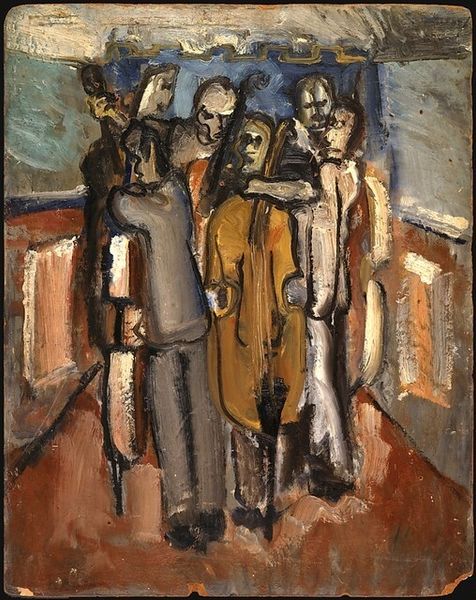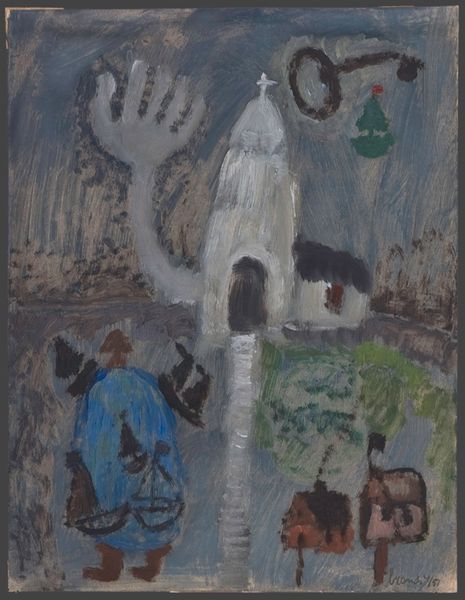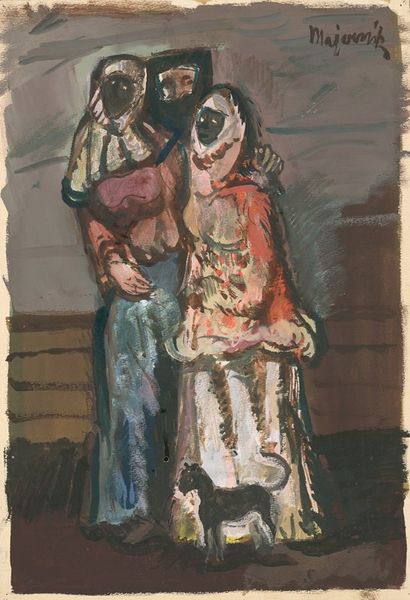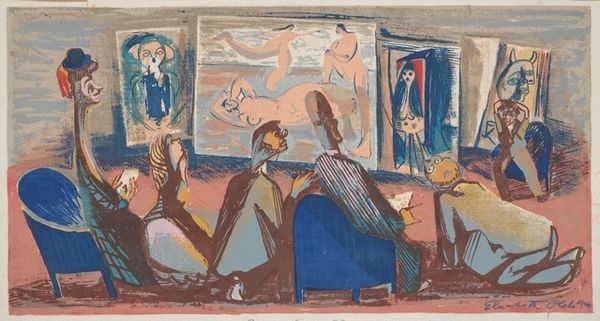
painting, oil-paint
#
portrait
#
gouache
#
painting
#
oil-paint
#
figuration
#
possibly oil pastel
#
underpainting
#
group-portraits
#
painting painterly
#
genre-painting
#
modernism
Dimensions: overall: 91.3 x 71.5 cm (35 15/16 x 28 1/8 in.) framed: 105.9 x 86.8 x 8.6 cm (41 11/16 x 34 3/16 x 3 3/8 in.)
Copyright: National Gallery of Art: CC0 1.0
Curator: Here we have an oil on canvas, titled *Untitled (three women and a child with mannequins)* created by Mark Rothko between 1936 and 1937. Editor: My first impression? A feeling of displacement. These figures seem strangely adrift in their surroundings, like ghosts in a department store. The color palette reinforces it – muted, somber. Curator: Rothko’s figurative works from this period offer critical insight into his later, more abstract expressionist pieces. Here, we see a pre-war urban environment. Consider the role of consumerism, even the changing role of women. These aren't just portraits; they reflect social tensions. Editor: Absolutely. The mannequins – soulless replicas of human form – strike me as potent symbols of alienation and artificiality. Are the women and the child meant to emulate the static, lifeless forms of consumerism represented by the mannequins? The child looking upwards certainly indicates aspiration or wonder... Curator: The historical context is vital. Think of the Depression, the anxieties bubbling beneath the surface as Europe moved towards war. Rothko, like many artists, explored the unease and uncertainty through representations of everyday life, embedding commentary on class and economic disparity in his artistic rendering. Editor: The imagery resonates on a deeper level, though. The grouping suggests family or social structures, but the disconnection between the figures speaks volumes. The blank expressions and averted gazes hint at a deeper sense of psychological unease that mirrors what was happening socially at the time. Curator: Indeed. Rothko's works of the 1930s and 40s highlight the pervasive alienation brought about by modernity and the market economy. It marks a crucial step in Rothko’s evolving exploration of humanity in relation to modernity. Editor: Looking closely, the subtle layering of forms and the almost translucent quality of the paint gives the entire composition an ephemeral feeling. The picture gives us much more to think about as we look at Rothko through his artistic trajectory.
Comments
No comments
Be the first to comment and join the conversation on the ultimate creative platform.
